Family Law Decision Trees
Navigating the Unknown: How Decision Trees Can Simplify the Divorce Process
Divorce is an emotionally challenging and complex process, often perceived as a daunting journey into the unknown. For those who have never experienced it, the path of divorce can seem shrouded in mystery and uncertainty. Anxiety and confusion are common as individuals grapple with questions they don’t even know how to ask. However, understanding the steps involved in divorce can significantly reduce this anxiety. This is where decision trees come into play – offering a structured, visual guide through the divorce process.
Understanding Decision Trees:
A decision tree is a flowchart-like structure that helps in decision making by laying out a series of steps or choices. In the context of divorce, a decision tree can provide a clear visual representation of the process, from the initial consideration to the final legal dissolution of marriage. This clarity is vital for individuals who feel overwhelmed by the complexities of legal proceedings.
The Role of Decision Trees in the Divorce Process:
- Clarifying the Path: Decision trees break down the divorce process into manageable steps. By visualizing the journey from start to finish, individuals can gain a clearer understanding of what lies ahead.
- Identifying Key Decisions: Divorce involves several critical decisions, from choosing legal representation to agreeing on child custody arrangements. A decision tree highlights these decision points, helping individuals prepare for them in advance.
- Reducing Anxiety: Understanding the process alleviates fear of the unknown. When individuals can anticipate what’s coming next, they are better equipped to handle the emotional and practical challenges of divorce.
- Empowering with Knowledge: Knowledge is power. A decision tree empowers individuals by providing them with the necessary information to navigate the divorce process confidently.
- Facilitating Communication: Decision trees can also be a tool for facilitating communication between divorcing spouses and between clients and their attorneys. They provide a common framework for discussing the process and making joint decisions.
Another tool that can assist in understanding the path of a divorce is this infographic.
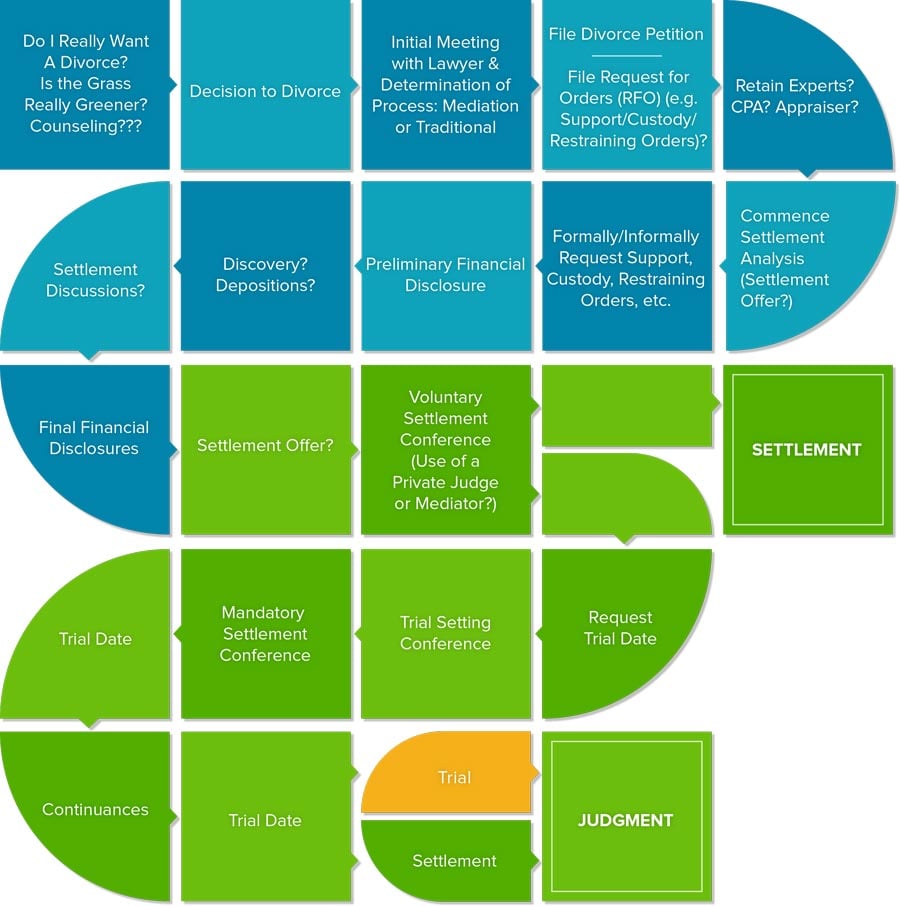
Can Family Law Be Broken Down Into A Series of Decisions?
These decision trees were designed to provide a holistic view of family law issues from a different perspective and to put the component parts in a logical format, for clarity.
Ending A Marriage Decision Tree
After a decision to terminate a relationship has been made, one must decide what type of action to file: Divorce; Legal Separation; or Annulment and when to file it.**
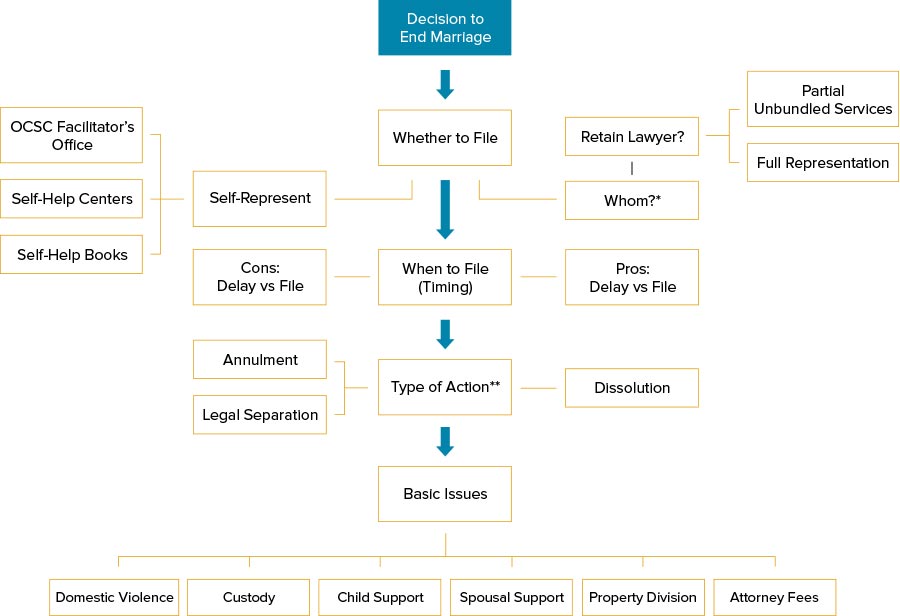
Child Custody Decision Tree
Child custody orders are comprised of two main components: Physical and legal child custody. Physical custody addresses a party’s physical time with a child, and legal custody addresses decision making. A parent may have joint or sole, legal or physical custody. Generally, parents are awarded joint legal custody. Most orders provide for specific periods of physical child custody being awarded to each parent. The actual time-share schedule and the percentage of time-share are more important than the label attached to the plan. The percentage of timeshare impacts the amount of child support.
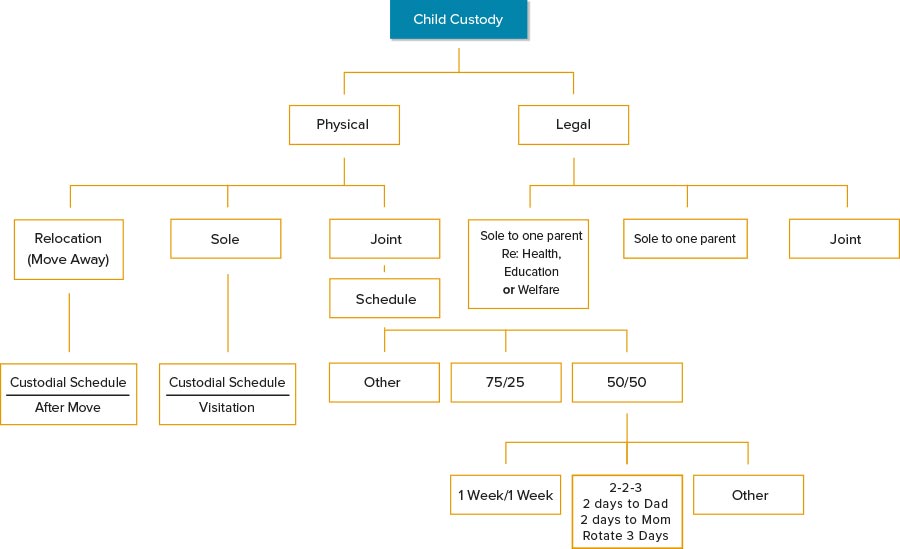
Child Support Decision Tree
Basic “guideline” child support is calculated by a computer program that analyzes many factors. The main factors are the parties’ respective incomes and the child custody time-share percentages. Child support may be comprised of several different components: basic guideline child support, Ostler-Smith order (percentage of additional variable income), and “add-ons” (medical insurance, uncovered medical expenses, child care, etc.). Life insurance on the life of the payor may provide security for the payment of child support.
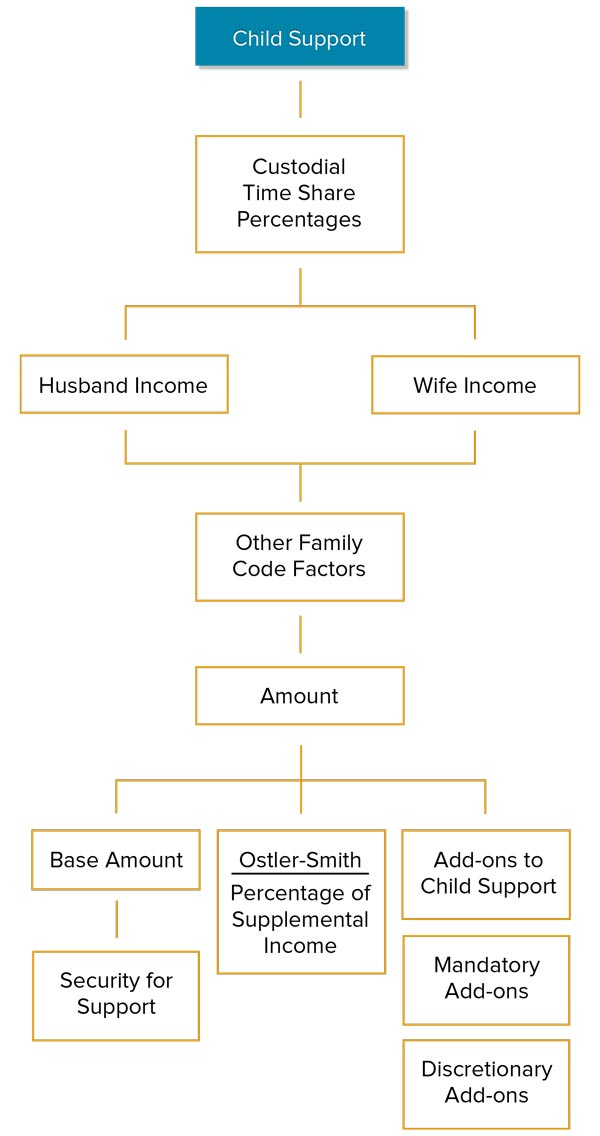
Spousal Support Decision Tree
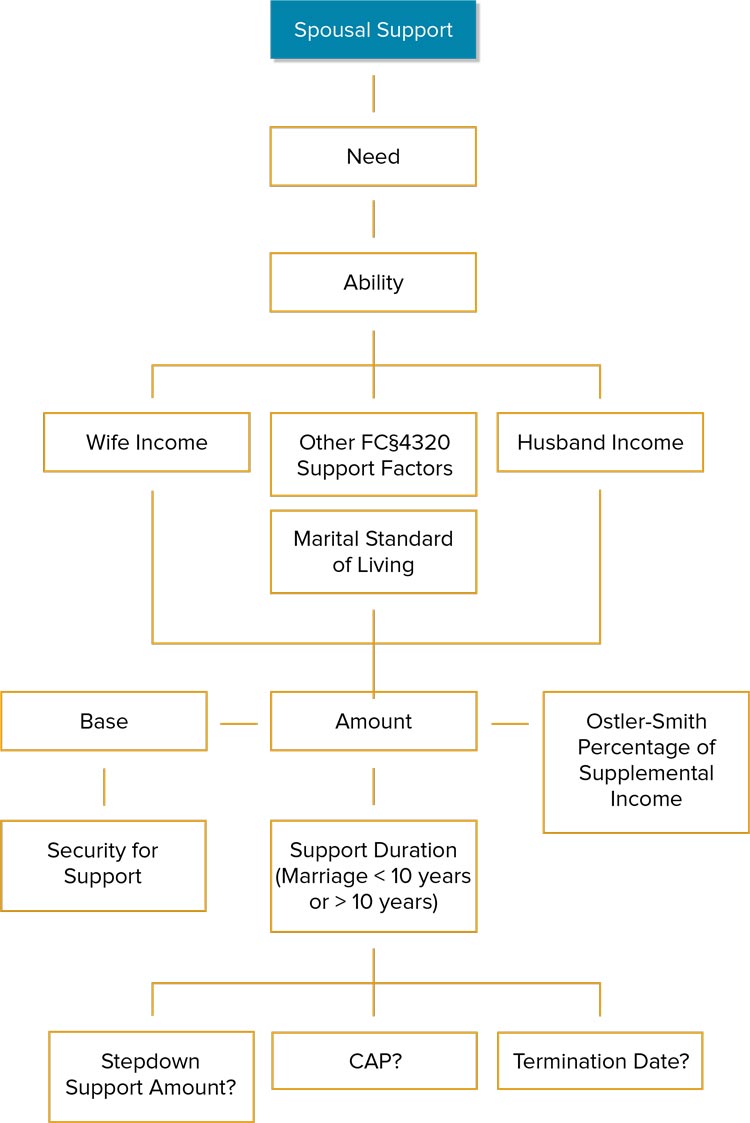
Permanent spousal support is determined by balancing the factors set out in Family Code section 4320. Often, the two most important factors are the incomes of the two parties, but the court must weigh and consider all relevant factors.
The marital standard of living is simply one of the section 4320 factors. It does not create a ceiling or a floor for spousal support and is basically a benchmark.
Spousal support is paid to a party who has the need for financial assistance by a party who has the ability to provide that assistance. Spousal support may be comprised of a base payment and a percentage of any supplemental income which is referred to as an Ostler-Smth order.
The duration of spousal support is based primarily on the length of the marriage. The duration of spousal support in marriages of less than ten years in duration will generally be one-half the term of the marriage. Spousal support in marriages of more than ten years may be payable as long as the payor has earnings.
Community Property Division Decision Tree
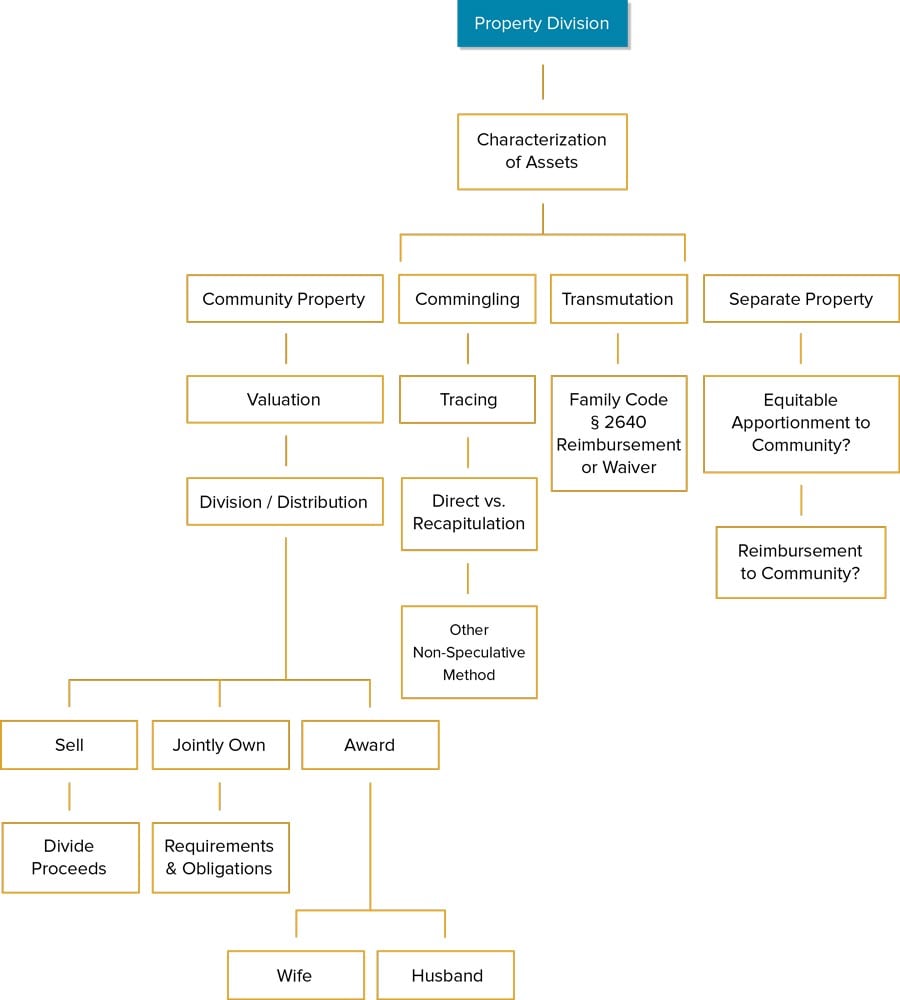
Assets must be characterized as separate property or community property.
Separate property is owned entirely by one party or the other.
Community property is equally divided between the parties and is either awarded to one of the parties or sold. If an asset is acquired during the marriage, it is presumed to be community property.
If a party commingles or mixes community property with separate property, the combined property will be characterized as community property unless the separate property can be traced back to its original source using financial records.
A party that transmutes or transfers separate property into community property may be entitled to reimbursement.
If the asset is separate property, the community may be entitled to reimbursement and/or an equitable apportionment of any increase in value related to any community effort or money contributed to the separate asset.
Attorney’s Fees Decision Tree

Courts may order one party to pay all or a portion of the other party’s attorney’s fees, costs, and expert fees if the court finds that such an order is necessary to level the litigation playing field. Family law courts look to each party’s respective assets and income together with the relative need of the requesting party. The courts must consider all of the section 4320 factors in the analysis.
Sanctions
Courts may also order financial sanctions against a party based on a number of different factors that are conduct based. Sanctions may be ordered to punish and/or deter uncooperative or bad behavior.
Divorce is undoubtedly a challenging life event, but it doesn’t have to be an unnavigable mystery. Decision trees offer a structured and straightforward way to understand the divorce process, reduce anxiety, and empower individuals with the knowledge they need to move forward. By breaking down the process into clear, visual steps, decision trees transform the ‘black hole’ of divorce into a path with a beginning, an end, and manageable steps along the way. Remember, knowledge is not just power – it’s peace of mind.